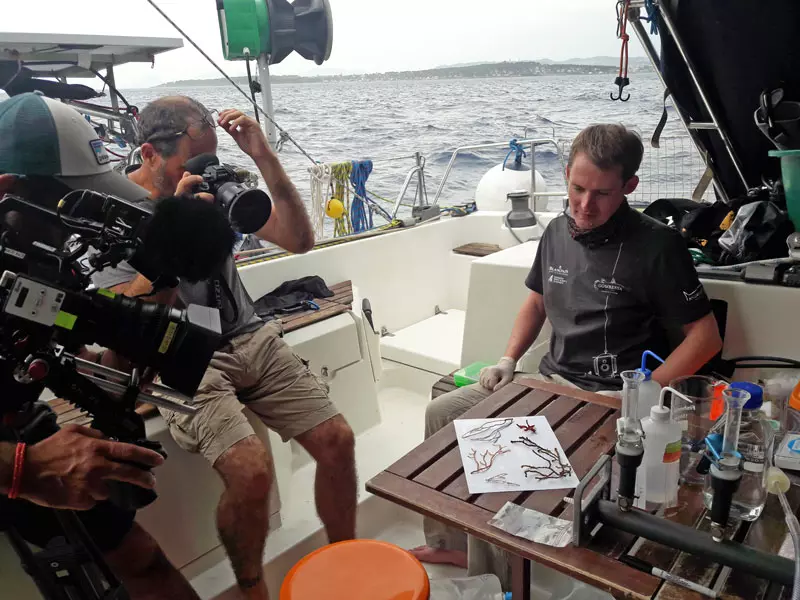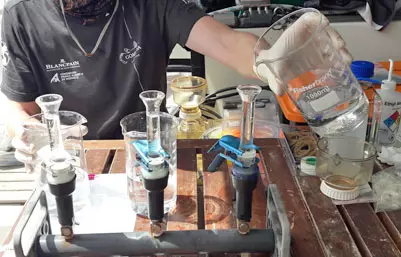
Known for his deep-sea expeditions, Laurent Ballesta is a very experienced diver. He is specialised in deep sea exploration for ecological appraisals. Named Gombessa, these veritable underwater epics combine the expertise of diving and scientific ambition.
2019’s expedition involved 28 days in the Mediterranean: four divers lived 100 metres under the water in a ‘bathyal station’ which is a system of pressurised units allowing saturation diving to explore the coast between Marseille and Monaco. The objectives were to assess the state of the water and the biodiversity of this twilight zone*.

During nearly 400 hours of diving, new footage (photos and videos) of species never seen alive in their environment was obtained. An inventory of fish present at six sites is underway based on environmental DNA extracted from the water taken from the surface and down to -120 m.
Laurent Balesta’s team also studied the temperature profile of each site, during a particularly hot summer. Temperatures varied from 26.7 °C at the surface to 13.8 °C at the end of the measuring probe (-197 m).
Other topics of interest were submitted to the expedition’s thirteen scientific partners. L'Œil d'Andromède, the association which organises the dives is supported by the Veolia and Prince Albert II of Monaco foundations, Arte and Ushuaïa TV, the Rhône Méditerranée Corse water board, and the French Agency for Biodiversity.
---
* Coastal water monitoring stops at -80 m for the deepest sites.

